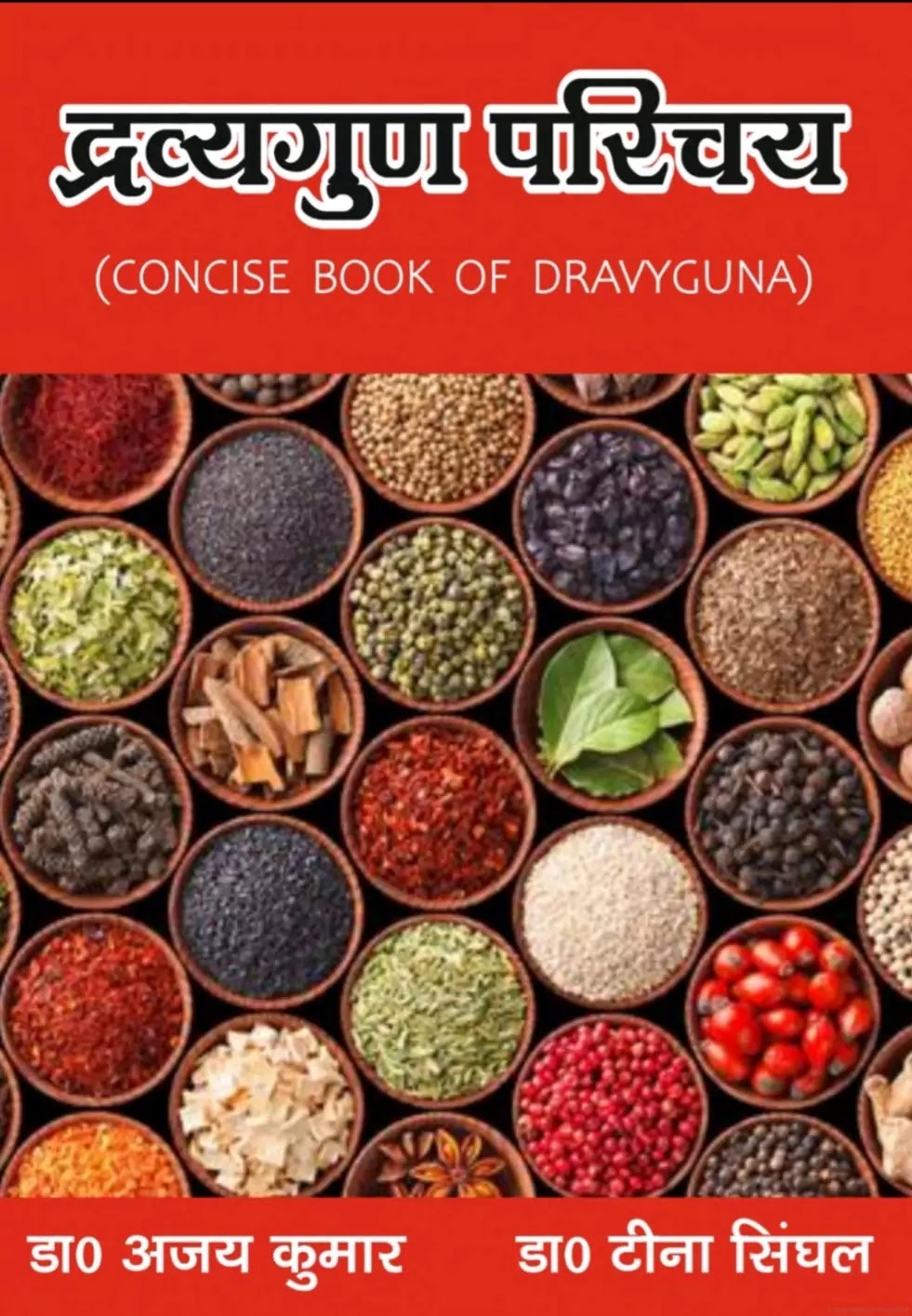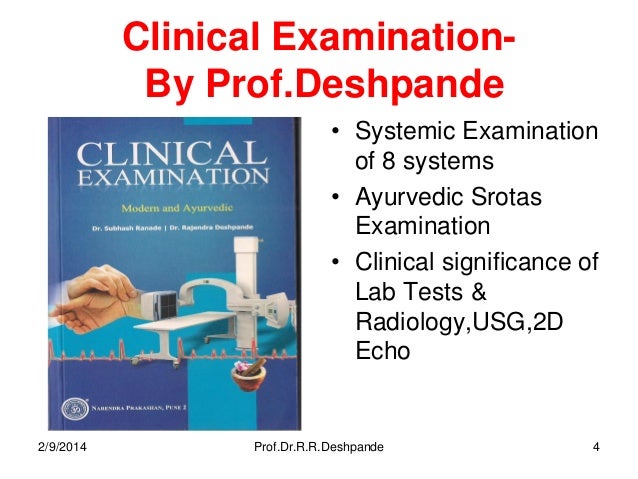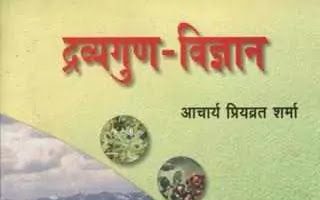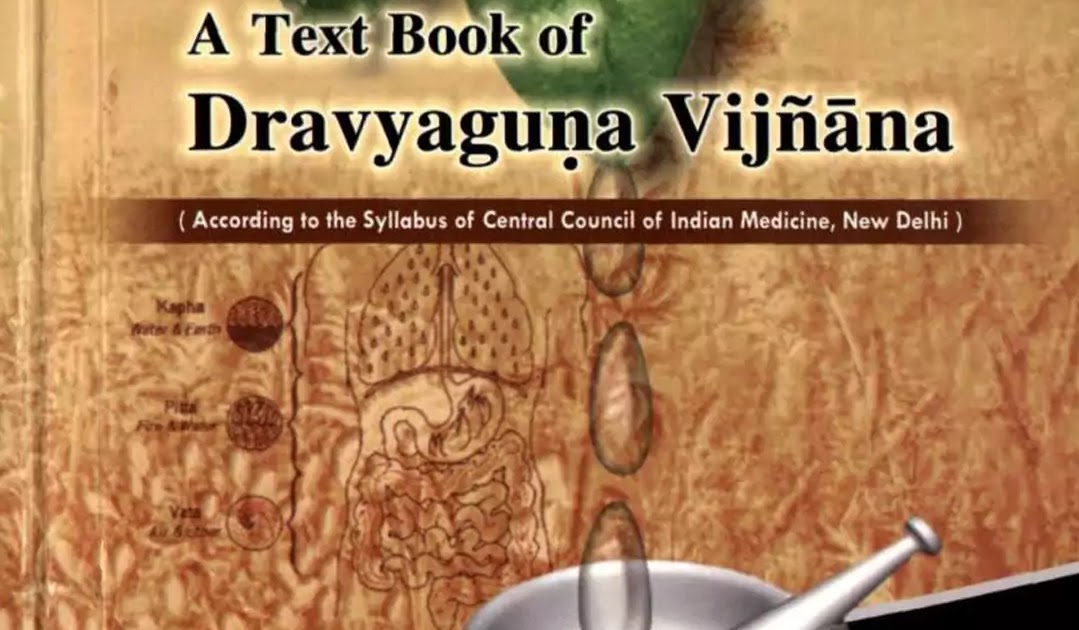Dravyaguna Vigyan Book Pdf
- Dravyaguna Vigyan Book Deshpande Pdf
- Dravyaguna Vigyan Book Pdf In Hindi Free Download
- Dravyaguna Vigyan Book Pdf In Marathi
- Dravyaguna Vigyan Book Pdf
Manuscript accepted on :July 27, 2011
Published online on: 26-11-2015
- Rasashastra book by bharat kalsariya pdf download A Text Book of Rasashastra (The Mystic 2nd year Books aparaayurveda Bhaishajya Kalpana book In Hindi Pdf free download.
- This book written by Dr. Prakash L Hegde M.D(Ayu), PhD(Ayu) and Dr. Harini A M.D(Ayu) is a good addition to the field of Dravyaguna. The book is written as per new CCIM Syllabus which consist detailed and essential information about 104 medicinal plants.
Dravyaguna vigyan book pdf book is the compilation done Dravyaguna vigyan book pdf Vigyan - Chaukhamba Sanskrit Pratishthan Dravyaguna Vigyan. Dravyaguna Vijnana (Materia Medica-Vegetable Drugs) English-Sanskrit, Part-Ii (K-N), (Krishnadas Ayurveda Series 48) by Dr Gyanendra Pandey and a great selection of. 6 Library containing various samhitas, nighantus texts a nd reference books of Ayurveda, Modern science. Name Department Designation D.O.J Photo 1. Bhavna Singh Dravyaguna Vigyan Professor 05 -04 -2021 2. Shubham Garg Dravyaguna Vigyan Reader 13 -12 -2017 3. Sohit Singh Dravyaguna Vigyan Lecturer 30 -03 -2021.
| Publication HistorycloseA. Kumar1*, S. D. Dubey1, S. Prakas1 and P. Singh2
1Department of Dravyaguna, Institute of Medical Science, B.H.U., Varanasi - 05 India.
2BAMS, B.H.U. India.
Abstract
The existence of medicine shows its prehistoric antiquity. The knowledge regarding medicinal value of plants has been collected in a course of several centuries. The acceptability of alternatives medicine particularly the herbal medicine has now become a critical need of time. In this articles fundamental of Dravyaguna (Ayurvedic Pharmacology) has been taken in accounts so that one can understand the action of various drugs properly. It is the time when Ayurvedic concept should be proved on modern parameters. Ayurvedic pharmacology is being dealt with these terms- Rasa (taste), Guna (Properties), Virya (active principles), Vipak (Biotransformation) and Prabhav (Specific action).
Keywords
Dravyaguna; Rasa; Virya; alternative medicine
Download this article as:| Copy the following to cite this article: Kumar A, Dubey S. D, Prakas S, Singh P. Principle of Dravyaguna (Ayurvedic Pharmacology). Biomed Pharmacol J 2011;4(1) |
| Copy the following to cite this URL: Kumar A, Dubey S. D, Prakas S, Singh P. Principle of Dravyaguna (Ayurvedic Pharmacology). Biomed Pharmacol J 2011;4(1). Available from: http://biomedpharmajournal.org/?p=1785 |
Introduction
The word ‘Dravyaguna’ means the science dealing with propertries and actions of drugs. This is counterpart of modern pharmacology. It would be necessary, at first, to understand the fundamentals of Ayurveda in general before one can grasp the concepts of Dravyaguna.
Panchabhutas (Akasha, Vayu, Agni, Jala and Prithivi) are regarded as physico-chemical basis of the material objects. When life evolved, out of these five, three came forward to control and regulate the biological functions. These three (Vata, Pitta, Kapha) are known as tridhatu (tridosha in pathological state) having specific functions of Vikshepa (movement). Adana (assimilation) and Visarga (growth) respectively.
Primarily based on this fundamental background, the following concepts were developed to explain the drug action.

Dravyaguna Vigyan Book Deshpande Pdf
Dravya (Substance-drug & diet) 2. Guna (Property)
Rasa (Taste) 4. Vipaka (Final transformation)
Virya (Potency) 6. Prabhava (Specific potency)
Karma (Action )
Dravya
‘Dravya’ means drug in this context. It is the substratum of properties and actions. Drug was studied extensively and in ensively in ancient times. In Rigveda, we find the ‘Oshadhisukta’ (Hymns on herbs) dealing with nature and classification of drugs. Caraka has classified drugs from various angles, e.g. according to source, effect on doshas, composition, properties, actions, etc. Marvelous piece in the Charaka-Samhita is the description of fifty groups of drugs according to their main action. Similar classification is found in the Sushruta-Samhita where thirty-seven groups of drugs are defined according to their effect and therapeutic uses. In this connection, two broad propositions are established
There is no substance which can not be used as drug.
All drugs are composed of five bhutas.
Gunas
Guna (quality or property) is defined as that which is inherently existent in substance and is non-inherent cause (of its effect). Gunas are fourty one in number and are classified into four groups-somatic, psychic, physical and applicative.
They are further elaborated as follows:
Somatic, also known as gurvadi, are twenty in number which can be arranged in pairs one opposite to the other such as-
Guru – Heavy 2. Laghu – Light 3. Shita – Cold
Ushna – Hot 5. Snigdha – Unctuous 6. Ruksha – Rough
Manda – Dull 8. Tikshna – Sharp 9. Shlakshna – Smooth
1 Khara – Course 11. Sandra – Solid 12. Drava – Liquid
Mridu – Soft 14. Kathina – Hard 15. Sthira – Stable
Sara – Unstable 17. Sukshma – Minute 18. Sthula – Gross
Vishada – Non slimy 20. Pichhila – Slimy
Psychic qualiteis : – These are six in number such as ichcha (desire), dvesha (aversion), sukha (pleasure), duhkha (pain), prayatna (will) and buddhi (determinative intellect).

Physical or material qualities : – These are five in numbers such as shabda (sound), sparsha (touch), rupa (vision), rasa (taste) and gandha (smell). They are specific objects (artha or vishaya) of five sensory organs.
Applicatory or paradi gunas are ten such as –
1- Paratva 2- Aparatva 3- Yukti
4- Sankhya 5- Samyoga 6- Vibhaga
7- Prithaktva 8- Parimana 9- Samskara
10- Abhyasa
Paratva is wholesomeness while aparatva is unwholesomeness.
Yukti is rational and effective combination of multiple factors.
Sankhya is accurate marking.
Samyoga is non-eternal combination of two or more factors.
Vibhaga is viyoga (disjunction), vibhakti (excision) and bhagasho graham (division).
Prithaktva is separateness or difference in terms of place, time, class and individuals.
Parimana is estimation in terms of measurement or weight.
Samskara is processing for refinement.
Abhyasa is constant use or practice.
Rasa
Rasa is the object of gustatory sense organ and is located in dravya.
Rasa is manifested by permutation and combination of bhutas in dravya and as such is dependent on it. On the other hand, from rasa one can infer the particular bhautika composition of the dravya generally. Thus, though subjective it is a reliable means for the same. Charaka says that ap and priathivi are material cause of rasa in its origin while the other three bhutas serve as instrumental cause in their variations. Commentators on the basis of double ‘cha’ interpret that ap and Prithivi too act as agents in variation and the other three bhutas also in origin.

Rasa is perceived through nipata (contact with the gustatory sense organ).
Thus rasa is known from perception and also from inference on the basis of its characters such as effect on salivation etc.
Rasas are six in number – madhura (sweet), amla (sour), lavana (salty), katu (pungent), tikta (bitter) and kashaya (astringent).
Dravyaguna Vigyan Book Pdf In Hindi Free Download
Madhura Rasa pacifies vata and pitta and increases kapha, promotes strength and helps excretions on the other hand if this is used excessively it causes disorders like prameha etc. While its non use may cause disorders due to aggravation of vata and pitta.

As said above, madhura rasa has effects on dosha, dhatu and mala. Effect of dravyas and gunas on dosha, dhatu and mala should be examined carefully.
Amla Rasa increases kapha and pitta and pacifies vata, decreases semen, is carminative, appetizer and digestive. By excessive use, it causes amlapitta (acid gastritis) etc. and its non-intake may cause agnimandya (diminution of digestive fire) etc.
Dipana-pachana effects are due to its action on agni. That is why due to non-use it leads to loss of appetite etc.
Lavana Rasa increases kapha and pitta while pacifies vata, destroys semen, is carminative, appetizer, digestive and moistening. Used in excess it vitiates blood and causes oedema etc and if not used loss of appetite etc and vatika disorders take place ‘Vishyandi’ (moistening) is the specific feature of salt.
Katu Rasa increases vata and pitta while decreases kapha, destroys semen, checks (movements of) wind, stool and urine and stimulates digestive fire. If used excessively it generates disorders caused by vata and pitta and if not used at all disorders caused by kapha arise. Due to aggravation of vata it causes constipation and obstruction in urine. Due to igneous nature it stimulates digestive fire.
Tikta Rasa pacifies kapha and pitta while increases vata, is absorbent and cleans channels. If used in excess vatika disorders and if not used kaphaja, pittaja and raktaja disorders arise. Due to predominance of vayu in its nature it absorbs moisture and also rasa etc dhatus by roughness.
Kashaya pacifies kapha and pitta while increases vata, along with checking and depressing digestive fire. By excessive use it causes vatika disorders etc. and by non-use kaphaja and pittaja disorders and loss of dhatus take place. Stambhana (checking) effect of kashaya is specific due to its shita and parithiva nature and because of this leads to loss of appetite. That is why it is prescribed in diarrhoea and not in grahaniroga where appetizers are required.
Vipaka
‘Vipaka’ is the term for final transformed state of drugs after digestion. In most cases, the rasas pass on as such and there is no change in their nature but in certain cases there is a definite change with consequent different vipaka which determines the future course and action of the drug. For instance, Shunthi (dry ginger) is pungent (katu) in taste but is transformed in madhura vipaka which determines its action on that basis.
It is of three types according to taste and effect on doshas – madhura (sweet), amla (sour) and katu (pungent) and two types according to properties-guru (heavy) and laghu (light).
Charaka has describes three types of vipaka according to the rasa emerged at the completion of digestion and the effect on three doshas Sushruta has criticized this view and has held that because of being only two groups of five bhutas-guru and laghu-there can be only two vipaka- guru and laghu. When there is predominance of Prithivi and jala it is guru and in that of the other three bhutas it laghu. Guru is madhura and laghu is katu including amla-vipaka. Thus the views of Charaka and Sushruta, apparently contradictory, can be synthesized.
Madhura vipaka increases kapha and semen and helps excretions. Amla vipaka increases pitta, decreases semen and is carminative. Katu, vipaka increases vata, decreases semen and is constipative.
According to Charaka’s view actions of the three types of vipaka have been said as vipaka is inferred from actions and thus the knowledge of action is essential for knowing the type of vipaka. Here actions of three types of vipaka are described on dosha, dhatu and mala. Madhura, amla and katu increase kapha, pitta and vata respectively. Madhura promotes semen while the other two decrease it. Katu vipaka obstruct the excretion of faeces and urine while the other two promote it. The knowledge of vipaka from the increase of doshas is evident and so from that of semen. If some drug is carminative the vipaka may be either madhura or amla which can be further differentiated by their action on semen. If it promotes semen it is madhura otherwise amla. In the same way, if some drug decreases semen its vipaka can be decided by its action on mala, if it carminates it would be amla otherwise katu.
Vipaka is chief as the fate (or further course) of the substance depends thereon.
The ingested substances produce good or bad effects according to vipaka. It is only after final transformation that substances exert accordingly wholesome or unwholesome effect on body.
Virya
Virya is shakti (power or potency) which is the means of action (of a substance).
Shakti (power or potency) is nature of virya and means of action its purpose. That is why charaka has said – Virya is that by which drug acts as instrument. Again he has established logically the cause-effect relationship between virya and karma on the law of agreement in presesence (anvaya) and absence (vyatireka) by saying that none can act without virya and all actions are caused by virya. Sushruta also says – virya is chief as drug action depends thereon. Thus drug is the active agent, virya is the instrument and pacification of dosha etc action. Hence the definition of virya may be laid down as ‘the quality of substance which is instrumental in the action caused by dravya’ as stated by Vopadeva in his Prakasha commentary on the Siddhamantra (of Keshava)
In common practice, grossly it is represented by the active fraction of drug which is the concentrated essence of the five bhutas (comprising) the substance.
The power is located inherently in the active drug, there also it is concentrated in a particular portion having essence of panchabhuta and known as active fraction. Thus the active fraction of a drug is the particular substratum of the power as stated by Shivadasha in his commentary on Dravyaguna – virya is power which is in the form of the concentrated essence of five bhutas.
Prabhava (Specific Power)
This specific power is based on the specific nature (bhautika composition) and exerts specific action. It is known from the specific nature initiated by specific combination (of bhutas) as said by Vriddha Vagbhata that prabhava is Svabhava (nature) exceeding all. This specific nature leads to specific action like emesis, purgation etc.
For instance, the specific natural composition comprising of the specific bhautika composition of the active fraction of danti causes specific action e.g. purgation whereas chitraka devoid of it does not possess that power. Some dividing power as of two types based on explicable and inexplicable actions say that the power behind explicable action is virya while that causing inexplicable one is prabhava. This is not correct because in scripture power is said as of two types according to generality or specificity. General power is known as virya while the specific one is prabhava. This has been stated by Charaka clearly as follows ‘where there is similarity of rasa, virya and vipaka but specific difference in action it may be taken as caused by prabhava. Vagbhata also follows the same line – ‘The specific action in spite of similarity in rasa etc is caused by prabhava’. In these definitions there is no mention of explicable or inexplicable. Wherever there is some case like that it can be included in prabhava because of its specific action as has been said by Charaka in case of wearing of gems. Here the word ‘achintya’ has been used in the context of wearing of gems and not as a part of the definition of prabhava.
Karma (Action)
Karma (action) is defined as that which is the cause of conjunction and disjunction, characterized by movement (or activity) and located in dravya.
Karma is instrumental cause in conjunction and disjunction, these cannot take place without karma. The word ‘kriya-lakshanam’ means that which is indicated by movement as said by Charaka-‘karma is movement initiated by conscious will’. It may be elaborated further as follows- In living organs or tissues response caused by conscious will, a quality of self, in the form of movements is karma. For instance, danti, on ingestion, stimulates movements in living intestines resulting in purgative action. In emesis etc. also the similar phenomena are observed. Like guna, karma is also located in dravya. Charaka defines karma as follows – ‘karma is that which is the cause of conjunction and disjunction, is located in dravya and does not require any other factor as its cause. Karma does not require any other karma for its operation as it has been said in the Vaisheshikasutra that karma is not caused by karma. Chakrapanidatta has explained it as follows – dravya, though cause in conjunction and disjunction, when created requires karma for its above activity whereas karma when emerged operates immediately without requiring any other cause (like dravya). In Ayurvedic parlance karma means performance of desirable measures such as panchakarma.
Inter-relation of basic principles of Dravyaguna in mode of drug action
Before intering the drug action following points must be kept in mind because they are basic fundaments :
Concept of Loka-purusha-samya (macrocosm-microcosma-continuum)
Properties are similar in substances and the body and as such normally, increase and decrease in the body are caused by substances.
Dravyaguna Vigyan Book Pdf In Marathi
The internal prana strength of the person combined with the qualities of external prama sustains by non-antagonism the body made of five bhutas.
Expernal prana – diet, agneya, saumya, vayavya, dravyas, day, night, air, sound, touch, sight, taste and smell.
Following principles affect the drug action
In general drug possessing madhrua rasa, will have madhura vipaka and shita virya. Similarly amla rasa will have amla vipaka, ushna virya and katurasa will have katu vipaka and ushna virya. Drug possessing lavana rasa, will have madhuara vipaka and usna virya. But drugs containing tikta and kashaya rasa possess katu vipaka and shita virya.
Naturally when rasa etc. are of in equal strength, rasa is subdued by vipaka, both by virya and all by prabhava
In case the rasa etc. are of unequal strength, the potent overcomes the weaker one, which is governed by the rule of nature as the stronger overpowers the weaker in case of incompatible combination.
Even incase of inequality of strength rasa etc. performs their own action due to their inherent property.
Conclusion
Rasa (Taste of Substance) Guna (Properties) Vipaka (Final Transformation) Virya (Active Principle) and Prabhava are properties which reside in dravya which exerts action on this basis. While exploiting the drug action one has to keep in mind all these factors considering their relative strength. Rasa is the basic thing which is overpowered by Vipaka which again is subdued by virya and prabhava stands above all.
References
- Acharya J.T., Charaka Samhita of Agnivesha (with ‘Ayurveda Dipika’ commentary by Cakrapanidatta), Chaukhamba Surbharati Prakashan, Varanasi, 2000.
- Acharya J.T. & Acharya N.R. Sushuruta Samhita of Sushruta (with) ‘Nibandhasangraha’ commentary by Dalhana), Chaukhamba Surbharati Prakashan, Varanasi, 2003.
- Sharma S.P. Ashtanga Samgraha of Vrddha Vagbhata, (with Sasilekha’ commentary by Indu), Chowkhanmba Sanskrit Series Office, Varanasi, 2006.
- Paradakar H.S., Astanga hrdayam of Vagbhats, (with commentaries ‘Sarvangasundard’ of Arunadatta & ‘Ayurvedarasayana’ of Hemadri), Chaukhamba Orientalia, Varanasi, 2005.
About the Book This book written by Dr. Prakash L Hegde M.D(Ayu), PhD(Ayu) and Dr. Harini A M.D(Ayu) is a good addition to the field of Dravyaguna. The book . Dravyaguna Vijnana (Fundamental Principles of Pharmacotherapeutics in Ayurveda) Amazon Best Sellers Rank: #3, in Books (See Top in Books). PDF | On Jan 1, , K. Nishteswar and others published Text Book of Dravyaguna.
| Author: | JoJokazahn Tura |
| Country: | Italy |
| Language: | English (Spanish) |
| Genre: | Spiritual |
| Published (Last): | 12 February 2010 |
| Pages: | 293 |
| PDF File Size: | 15.22 Mb |
| ePub File Size: | 9.77 Mb |
| ISBN: | 845-2-17531-178-8 |
| Downloads: | 50485 |
| Price: | Free* [*Free Regsitration Required] |
| Uploader: | Zoloshakar |
The animal models cat, rat etc. Their delivery is prompt, packaging very secure and the price reasonable.

I’ve just received the shawl and love it already!! Gyanendra Panday Hardcover Edition: All emails will be sent by Exotic India using the email address info exoticindia. Hence, a detailed knowledge of Dravyas, its properties takes prime importance.
Thank you so much. To achieve the maximum therapeutic action it is always preferable to administer the swarasa fresh juice or kalka paste or churna powder of fresh herb or dried herb. Look Inside the Book. Students should not ‘cram’ this book to get through the examination successfully but I expect them to learn the basic pharmacology of drugs in common clinical use and their rational application in therapeutics. You will be informed as and when your card is viewed.
Dravyaguna Vigyan Book Pdf
All emails will be sent by Exotic India using the email address info exoticindia. Would you like to tell us about a lower price? To get the free app, enter mobile phone number. The present book is one such honest effort in this direction.
I highly recommend others to use this site. Opium obtained from Ahiphena Poppy is indeed an excellent medicine. But the sad story is that the very same Morphine has been the bane of addiction.
Write a customer review. Keep up the great work guys! A Hand Book of Dravyaguna. And for this, knowledge of basic principles which govern Dravyas is equally important.
Classical references from Nighantu with shlokas, makes this a one stop book for information on medicinal plants. The statues arrived yesterday.
Om Prakash Rout, and Mrs.
For successful treatment, co- ordination and co-existence of Chatuspada is extremely essential. I am grateful to be your customer. Hence logical application of Dravyas is very essential for treatment. Acharya Priyavrat Sharma has disagreed with this concept and rightly suggested that active principle is the adhisthana of virya, Sushruta alone initiated a debate to discuss the relative importance of all the principles of drug action and finally concluded that dravya is the only prime one among all the principles.
However, it is useful to term the initial consequences of drug-cell interactions as the action karma of the drug, the remaining events that follow are called drug effects phala. Om Prakash Rout, and Mrs. And rest assured that I will soon order more books.
Share your thoughts with other customers. Amazon Inspire Digital Educational Resources.
Welcome to www.saujanyabooks.com
Keep up the great work guys! Subscribe for Newsletters and Discounts. Preface Dravyaguna is interpreted as clinical pharmacology since the most o the Ayurvedic drugs were initially evaluated only in human beings. On keen observation, Dravya Medicine stands only second, reiterating its importance in treatment. Withoutabox Submit to Film Festivals.
Each and every book arrived in perfect shape–thanks to the extreme care you all took in double-boxing them and using very strong boxes.
Satya Deo Dubey Paperback Edition: I have purchased several items from Exotic India: My heartfelt thanks are due to Sri K. Shanthkumar Lucas Paperback Edition: Exotic India you are great! Visit our Help Pages.
Dravyaguna book
Be the first to receive our thoughtfully written religious articles and product discounts. Again, thank drafyaguna very much. Verify the characters on the left From: In India, the earliest mention of the use of medicinal plants is found in the Rigveda which was written between B. Sastry, Foreword by Dr. One book which caters ample information on medicinal plants from classical and modern literature, highlighting the significant features and clinical efficacy is the need of the hour.
Amazon Prime Music Stream millions of songs, ad-free.